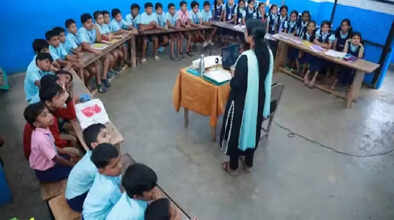The sitting model changed in schools of this state with a more than 25 percent Muslim population; there will be no backbenchers.

Ramvilasom Vocational Higher Secondary School (RVHSS), located in the Valakom area of Kollam district, has implemented a new seating system in its classes. Now students do not sit one behind the other in traditional rows.
A school in Kollam district of Kerala has changed the way of studying. Such a way that now no child will consider himself behind. There are no "backbenchers" here now, because all the children now sit in the front row. This change has not come from any government order, but has been inspired by a scene from a film. A small scene from the Malayalam film "Sthanarthi Sreekuttan" has made a big impact in schools. In the film, a student was shown feeling neglected by sitting at the back and he suggested a new idea. An idea that forced many schools to think in real life too.
Now every child is a first bencher, the idea came after watching the film
Ramvilasom Vocational Higher Secondary School (RVHSS) located in Valakom area of Kollam district has implemented a new seating arrangement in its classes. Now the students there do not sit one behind the other in traditional rows. Rather, desks have been placed on all four walls of the classroom in such a way that every child is visible and everyone gets equal attention from the teacher. This ensures that no child feels left behind and everyone gets an equal opportunity to learn.
This change was started from the lower primary classes of the school, but it was liked so much that now this model has reached eight more schools in Kerala and one school in Punjab. The special thing is that the principal of that school in Punjab saw the film on OTT, showed it to the children in the school and then adopted the same layout.
The film influenced people
The director of the film, Vinesh Vishwanathan, says that this idea was not completely imaginary. It was inspired by the actual teaching methods seen during the District Primary Education Program (DPEP) several years ago. He explained how a small scene in which a child says he doesn't like sitting in the back had such a deep impact that real schools started adopting it. This model boosts students' confidence, makes them feel equal and turns the classroom into a collaborative environment. Now all children can see each other, teachers can keep an eye on everyone and there is more interaction and participation in the class.

